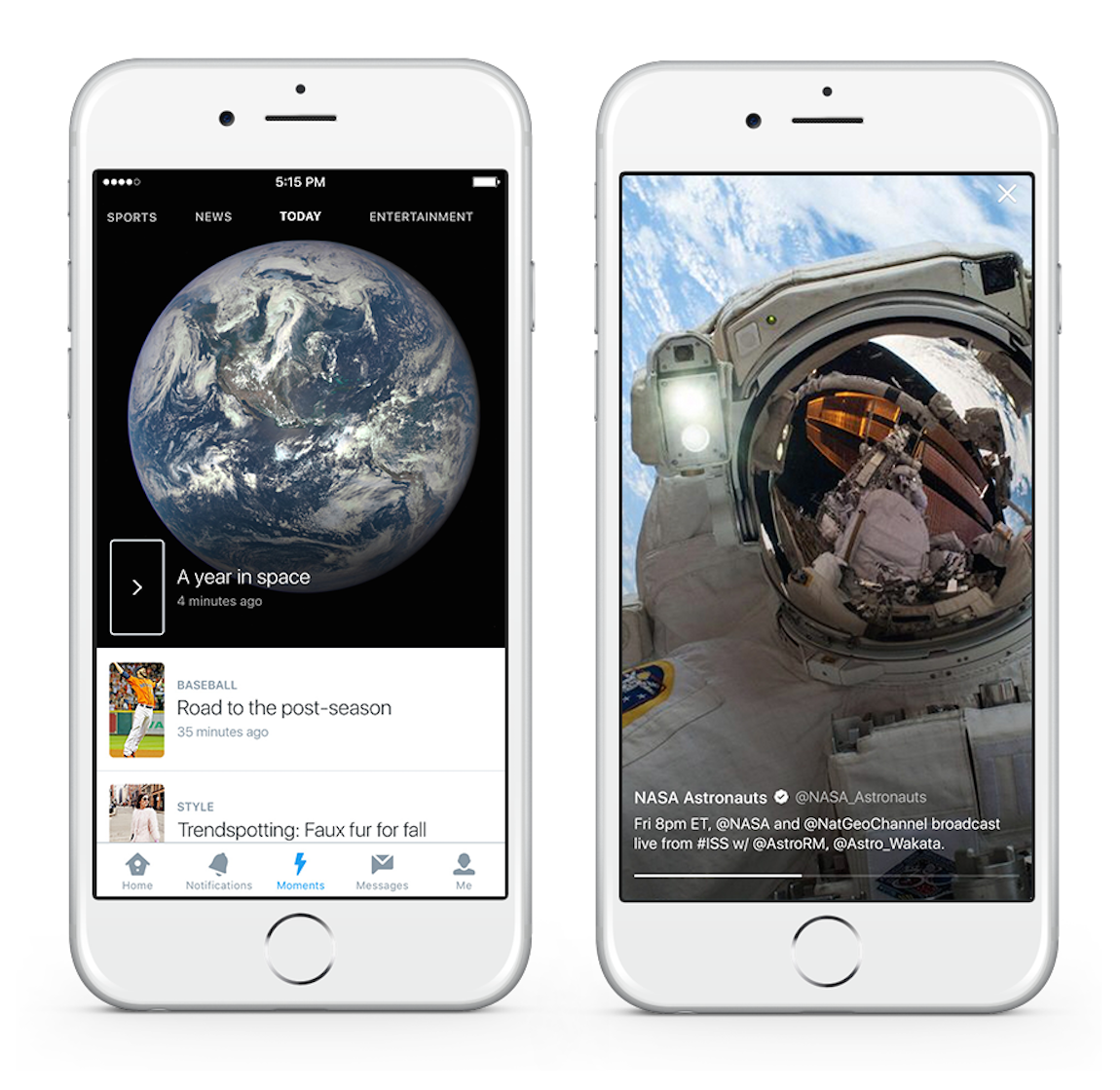Why Are My Social Media Bounce Rates So High?
by MGB2B
 Google Analytics is one of the most powerful tools in your social media arsenal. The data you gather from it can tell you what types of content your audience prefers and how they’re most likely to find it. You may discover that the content that drives the most visits to your website from search might not do the same from social. You also might realize that while visitors are landing on your white papers page (for example) from your social platforms, they are immediately leaving, or “bouncing.” So what is causing your high bounce rates from social media and how can you lower them?
Google Analytics is one of the most powerful tools in your social media arsenal. The data you gather from it can tell you what types of content your audience prefers and how they’re most likely to find it. You may discover that the content that drives the most visits to your website from search might not do the same from social. You also might realize that while visitors are landing on your white papers page (for example) from your social platforms, they are immediately leaving, or “bouncing.” So what is causing your high bounce rates from social media and how can you lower them?
First, what is a bounce rate, as it pertains to web traffic? A bounce rate, as defined by Google, is “the percentage of sessions in which the person left your site from the entrance page without interacting with the page.” While Google uses the term “sessions,” I am going to continue referring to these as visits. Both sessions and visits refer to the number of users who landed on your page, not specifying unique or repeat traffic.
Your website has an overall bounce rate, which, if things are going well, is probably somewhere between 40% to 55%. Naturally, people are going to land on your page looking for something else or will need to leave it for one reason or another. But as a rule of thumb, at least half of the visitors to your site should take some sort of action, whether that’s clicking to another page, filling out a form, or downloading a piece of content. When your overall website bounce rate creeps up higher than 60% or 70%, you should start looking for issues.
When it comes to high bounce rates from social media, however, 70% or higher is all too common for B2B companies. But why? Consider one of the top pages you send social media users to and ask yourself a few questions:
Is the content that my social media posts are promoting visible? There are few things more frustrating in the digital world than clicking on a link expecting to find ABC, only to find XYZ. It’s a BuzzFeedy strategy than can work to boost website clicks and lower bounce rates, but only if the content that’s being promoted is actually somewhere on the page. For example, you are tweeting about your latest manufacturing white paper, and while it’s at the top of the page you’re sending users to, so are several other white papers that might pique users’ interest. What won’t work to lower your high bounce rates from social media is tweeting about a great new piece of content, only to send users to a totally unrelated page. That will surely prompt a user to leave your site before interacting with it (and possibly not come back).
Is there an obvious call to action on this page? If you are sending users to your most recent blog entry from a social media post, it’s pretty obvious that reading is the action they’re expected to take. But if you are dropping visitors onto a page where your ultimate goal is to collect their contact information, then you need to have a very clear call to action to make that happen. Don’t rely on the social media post the user clicked on, even if it clearly read “fill out the form to download,” to drive the user to action. A user clicking away from the page for a moment, taking a phone call, or not fully reading the tweet could all result in confusion if the page they land on does not feature a clear call to action.
Can users easily navigate to other parts of my site from this page? Perhaps the blog post that you promoted on LinkedIn that drove the user to your site in the first place isn’t quite what they were looking for. They might scroll up looking for a navigation bar so they can explore other parts of your website. But if your blog page doesn’t feature such navigation, they might just throw curiosity to the wind and close the page. A user that could have become a lead is now onto other things.
In all three of these scenarios, a user was driven from a social media post to your website, only to leave it before taking any action. These issues are likely reasons why your bounce rates are sky high. By presenting your content clearly, giving users an obvious call to action, and offering them a way to explore the rest of your site where appropriate, you can drastically lower your high bounce rates from social media.
Your social media channels’ proprietary analytics can also reveal valuable insights into how users interact with your content. Take a look at your top tweets, LinkedIn posts, and other updates by engagement to determine which times of day, phrasing, and platform best drive users to your site. For example, a tweet about your latest white paper shared after working hours may have received plenty of likes, but not many clicks. Try sharing the white paper again, but this time in the morning on LinkedIn, and see how it performs.
Like much of what you do online for your B2B company, lowering your high bounce rates from social media takes a certain amount of trial and error. Testing and tweaking your strategy will help you hit the right users at the right time. And making improvements to your website will benefit your bounce rate from social as well as your site’s overall user experience.
Want to learn more about lowering your bounce rates from social media? Drop us a line.
Continue ReadingB2B Monday Myth: Creating Content Is All You Need To Do
by MGB2B
The Myth: All I need to do is create good content, and people will find it.
The Truth: Content found organically is wonderful, but you’ll need to distribute it in other ways to get more quality leads.
In the last few years, the role of content marketing has grown exponentially. Many businesses, large and small, have poured a hefty share of their marketing budgets into content creation and have increased conversion because of it. But is creating quality content with great SEO all you need to reach your target? Accomplished content marketer and author of The Content Formula, Michael Brenner, puts it this way: “Even great content needs a push.” So what are the best ways to push your content?
How to Distribute B2B Content:
Paid Search
Paid Search, also referred to as Pay-Per-Click (PPC), is one of the best ways to reach prospects with your content. That’s because you are reaching people who are actively searching for what you have to offer. Plus, when done correctly, it can help you secure a spot on Google above organic listings. Although it can be a bit costly, the benefits are well worth the investment.
One of the main benefits is that you can make real-time changes to your messaging. Arguably the best feature of Paid Search is that you can target your messaging, and then easily change it up at a moment’s notice. You can run several different ads to see which copy drives the most prospects to your content, then cut out the ads that aren’t performing and sink that money into the high-performing ad to drive more quality leads.
You can also geo-target your ads, so that you are reaching people only within the markets you want to pursue. If you have a limited Paid Search budget, this feature can be very useful.
Paid Social
A close relative of Paid Search is paid social. The major difference is that instead of advertising on search engines, Paid Social allows you to advertise on social media. Paid Social allows you to reach beyond just your followers. Facebook in particular, really enables you to narrow your target. You can actually have a Custom Audience made up of your database of prospects. If you have over 100 people on your list and they are on Facebook, you can serve up ads directly to them. You can also retarget people who have visited your website to capture those who have shown interest in your product or service, but maybe weren’t ready to convert yet.
You can also target your ads in order to add new people to your prospects list. You can target by demographics and location, but also by categories like Employer and Job Title, so your content is getting directly into the hands of people who will find it useful.
Trade Publication Programs
While the consumer magazine industry may be dying, the trade pub industry is alive and well. And a good relationship with your industry trade pubs can be a great tool to have in your arsenal. Getting access to their lists is one of the best ways to grow your list of qualified leads. These are people who are already in your world, looking for content that is relevant to them. Some publications already have elaborate content distribution programs in place. All you have to do is give them your white papers and infographics, and they’ll circulate it to the right people in their database for you.
Creating compelling and relevant content is only the half the battle. Paid media strategies greatly improve the chances of your content being seen by the right people at the right time. And that translates into highly qualified leads for your sales team. It’s an effort that is easy to fine-tune and well worth the money.
Continue Reading
6 Ways to Use Twitter Moments for B2B Brands
by MGB2B
Twitter has been bending over backwards to gain new users. You may have noticed a slew of new features such as: “What’s Happening?” at login, a channel-wide push for live video, and notifications that tell you what people you follow are saying on Twitter. Yet, what is possibly the most useful tool Twitter has released in the past several weeks seems to have slipped under the radar: Twitter Moments. The feature is accessible to everyone as of a few weeks ago. And it is now available for use on mobile for the first time!).
A Little Background on Moments
Maybe you remember all of the pomp and circumstance around the release of Moments in late 2015, topped off with a TV ad campaign earlier this year. Moments launched as a feature visible to all Twitter users, but customizable by only a few. These collections of five to ten tweets about topics like science, sports, and entertainment were curated exclusively by Twitter employees and select publishers, leaving average users rather disconnected. Now that they are available for all users to create and with the ease of using your phone, Twitter Moments for B2B brands can become a useful tool in your social media arsenal.
Unlike a single retweet, a Twitter Moment allows you to collect and share several tweets at once from other users. For example, if you were to create a Twitter Moment about Elon Musk’s recent presentation on traveling to Mars, you may have selected a tweet from The Verge showing people flooding into the room, a tweet from a fellow viewer as Musk took the stage, and several tweets highlighting main points Musk made, as well as questions from the audience. While none of these tweets came from you personally, they would represent discussions and points of view that interest you.
Once you have a handle on how to create them, check out these 6 ways to use Twitter Moments for B2B brands:
- Cover events and trade shows. B2B trade shows create a flurry of great tweets and exchanges between exhibitors and visitors. In addition to pumping out content about your own experience at the show, use a Twitter Moment to aggregate 10 or so tweets that sum up the event. You or someone on your social media team can create Moments as in-the-moment updates during the show or as a summary of each day of the event.
- Offer commentary on conferences. Similar to the trade show tips above, Twitter Moments can create valuable summaries of conferences, webinars, workshops, and other live events for you and your followers. A Moment consisting of tweets posted throughout the presentation can help demonstrate your company’s perspective on a topic or simply act as an outline of the information you just received.
- Bolster product launches. Many trade publications rely on social media just as heavily as email to distribute news about new B2B products. As you send out your press release, create a Moment to aggregate tweets from these publications as they spread your news on Twitter.
- Follow market trends. Use Moments to track things that impact your industry (or your customers’ industries) such as new regulations, research, and other changes. Follow emerging technologies that could become new applications for your company’s products. Or monitor fluctuations in market value.
- Showcase your company’s interests. Does your company support a cause? Or are you closely tied to the surrounding community? Help your followers learn more about your company by sharing Moments about things that are important to you.
- Position your CEO as a thought leader. A CEO who maintains an active social media presence can offer many benefits to their company. Most importantly, it ties a personality and face to the company. This creates a persona customers can connect with. It’s a great way to demonstrate interest in things that impact the company’s well being. Yet with only 39% of Fortune 500 CEOs using social media, many Twitter users following B2B companies don’t know who CEOs are or what interests them. This is something you can take the lead on.
Now that the feature has been extended for use on mobile, Twitter Moments for B2B brands can become an even more versatile tool for PR and event coverage. Time to seize the Moment!
Continue Reading
